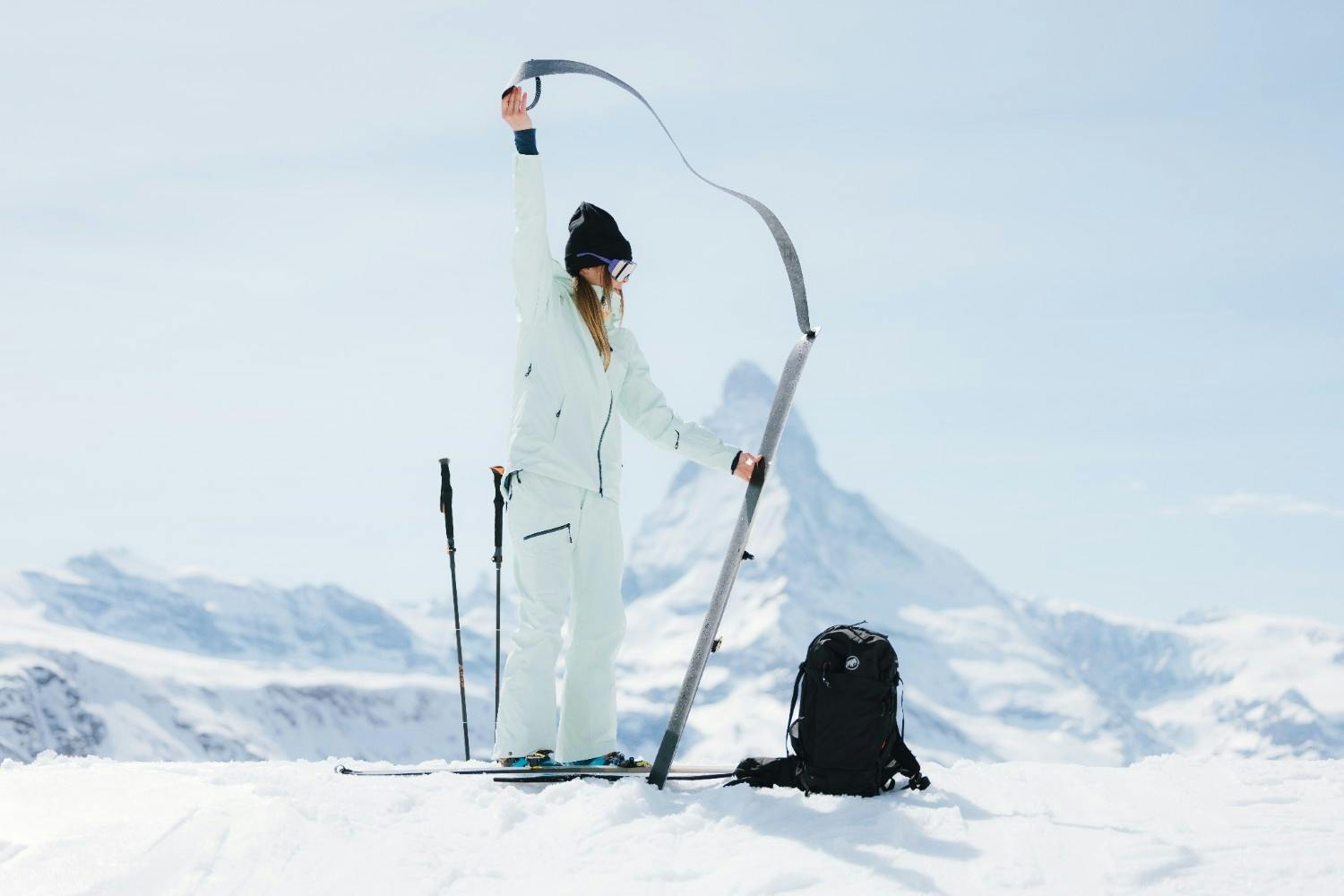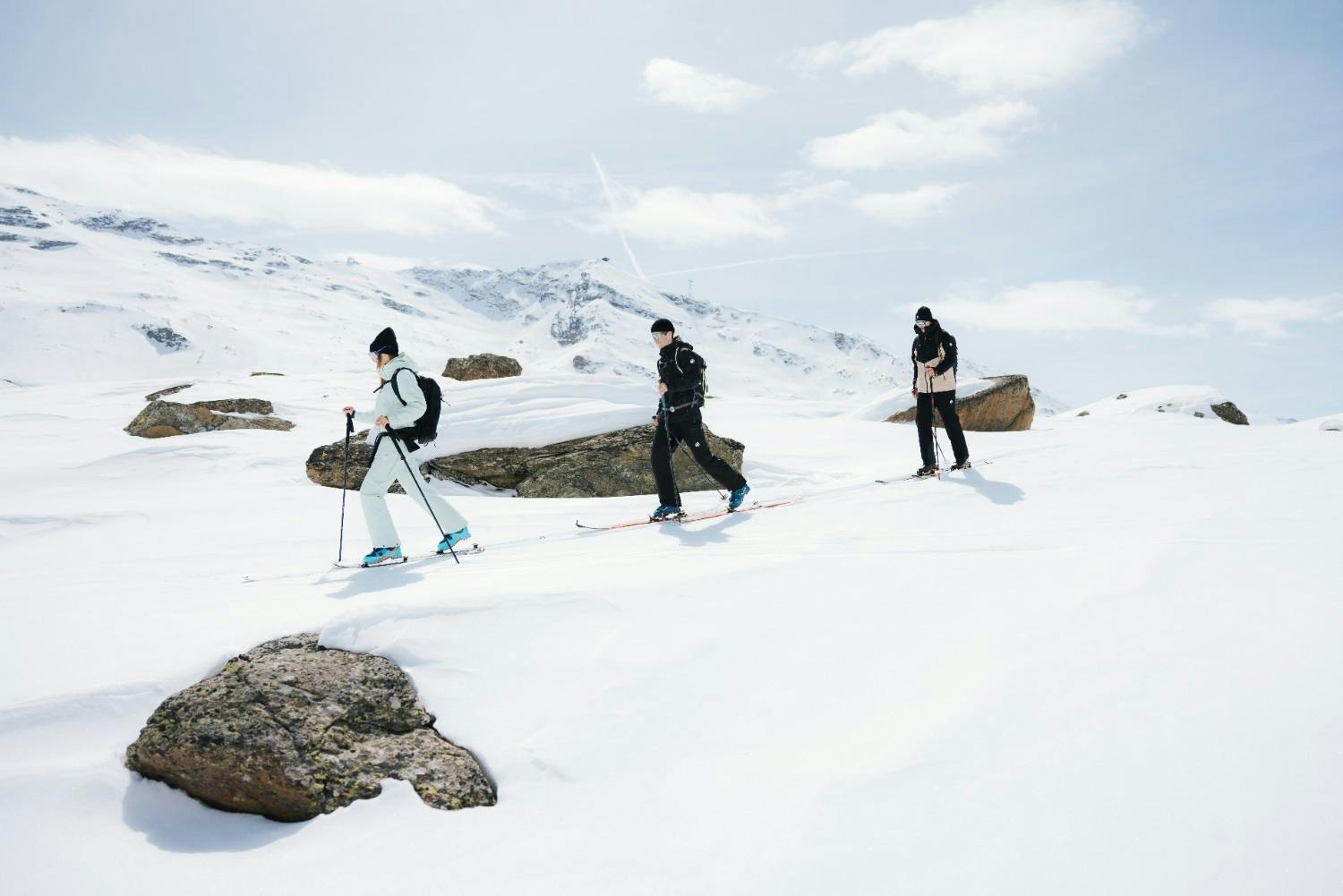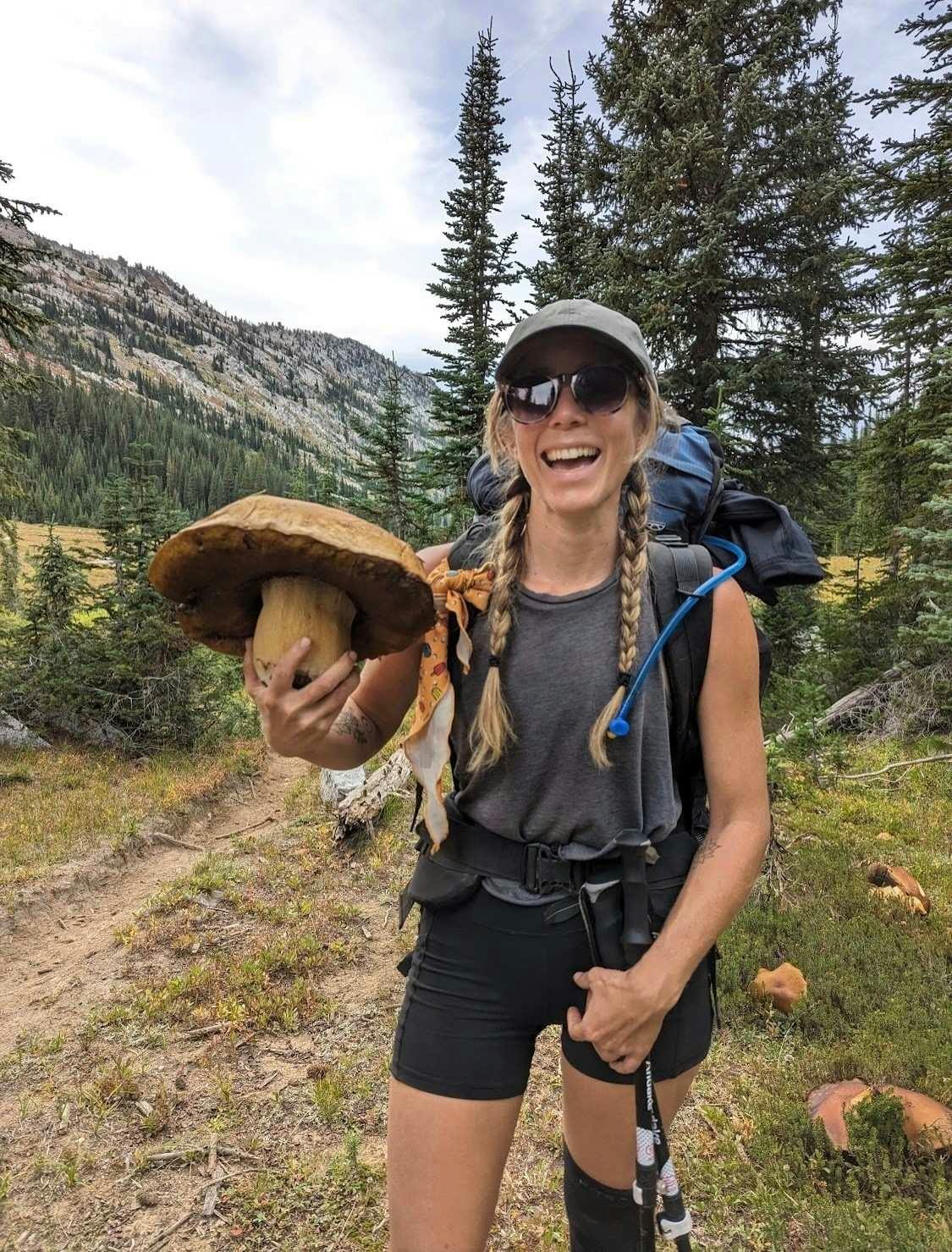
There’s something deeply satisfying about uphill skiing (aka skinning or alpine touring)... Maybe it’s the steady rhythm of climbing under a pink sunrise, or the quiet swish of your skins across fresh snow, without the hustle and bustle of the crowds. You'll get worked in the best way possible, earn views that chairlift riders never see, and actually feel the mountain under your skis instead of just sliding down it. What started as training for backcountry skiers has become its own thing. Skinning isn't just how you get to the goods anymore; it is the goods.
If backcountry skiing has been on your radar, resort uphill access is your on-ramp. You can dial in your gear, figure out what kind of shape you're actually in and pick up safety habits without committing to the full send into the wilderness.
Maybe you're after those magic hour laps when the world belongs to just you and the mountain. Maybe you're training for something bigger. Maybe you just want to try something new. Whatever brings you to it, skinning opens doors you didn't know existed. But uphill skiing has its own code and etiquette, including proper gear, key techniques and ways to not be that person everyone else is talking about in the lodge. Here's how to get started without looking like a complete rookie with pro tips and tricks from our Mountain Travel Experts.
Related Reading: Resort Policies for Uphill Skiing
 The first step in backcountry skiing is learning how to put on and take off your climbing skins. l Photo: © Aleiko Studio
The first step in backcountry skiing is learning how to put on and take off your climbing skins. l Photo: © Aleiko StudioWhen it comes to alpine touring, your everyday resort setup won’t cut it; you’ll need a whole new kit designed specifically for uphill travel. The learning curve isn't steep, but everything works a little differently than what you're used to. Touring boots have a walk mode that frees up your ankle for the climb, then click into ski mode when it's time to send it downhill. The bindings follow the same logic: heel up for skinning, heel locked for skiing. It's like having two different setups in one.
Snowboarders use splitboards that do exactly what the name suggests – they split apart into two skis for the ascent, then snap back together into a regular board for the descent. It's honestly pretty brilliant engineering. The magic all comes together with climbing skins – thin strips that stick to your ski bases and grip the snow on every step up. They're what keep you from sliding backwards, and they peel off clean when it's time to drop in.
 Skinning requires some new techniques, but once you master them you'll unlock a whole new terrain experience. l Photo: © Aleiko Studio
Skinning requires some new techniques, but once you master them you'll unlock a whole new terrain experience. l Photo: © Aleiko StudioBrush up on the rules of uphill skiing etiquette before you head out to keep your ski cred intact:
 Alpine touring opens up new sections of the mountain that many people don't get to see. l Photo: © Zermatt Tourism
Alpine touring opens up new sections of the mountain that many people don't get to see. l Photo: © Zermatt TourismUphill skiing isn’t technically hard, but it definitely makes you work for it. It’s kind of like hiking on skis, with a bit of technique and a lot of leg burn. To prepare for uphill skiing, work on strengthening your core and leg muscles, endurance, balance and flexibility (for kick turns). The first few laps might feel rough (especially if you charge too fast or forget to pace yourself), but once you get the rhythm down, it’s surprisingly fun and empowering. Plus, there’s nothing like getting to the top your own way, no lift line required.
Related Reading: How to Get (and Stay) in Shape for Ski Season
Uphill skiing is catching on fast, and more resorts are jumping on board, but not all of them have opened the skin track just yet. To find out if uphill travel is allowed, head to the resort’s website and look for their uphill policy. If it is permitted, don’t skip the fine print; most resorts have specific uphill routes, rules, designated hours and sometimes a small uphill pass or waiver.
Related Reading: Resorts Offering Uphill Skiing & Their Policies
Ready to discover what it really means to earn your turns? Some resorts now rent uphill skiing gear so you can test it out before you commit to buying the whole setup. A few of our favorite spots include Four Mountain Sports at Aspen Snowmass and Stratton Mountain Resort, both of which make it easy to dip a toe into the skin track scene.
Want to know which resorts rent gear or have the best uphill access? Our Mountain Travel Experts are here to help with all the details, from rental info to uphill-friendly lodging and more. Click here to get started with a free quote and we’ll help you plan the ultimate ski trip: skins, stoke, and all.
TAGGED: uphill skiing, alpine

Author



Sign up for exclusive offers, news, updates and more.